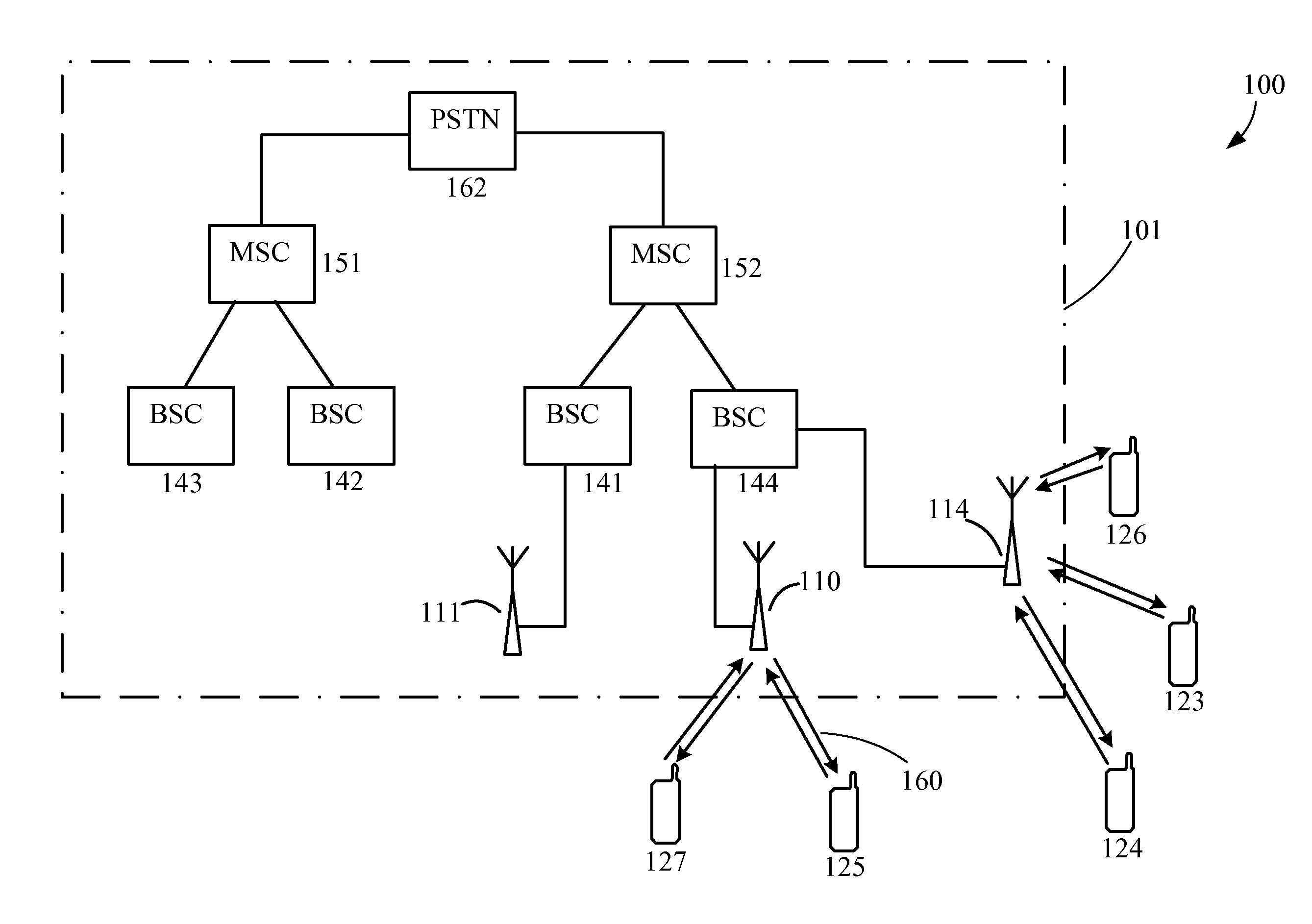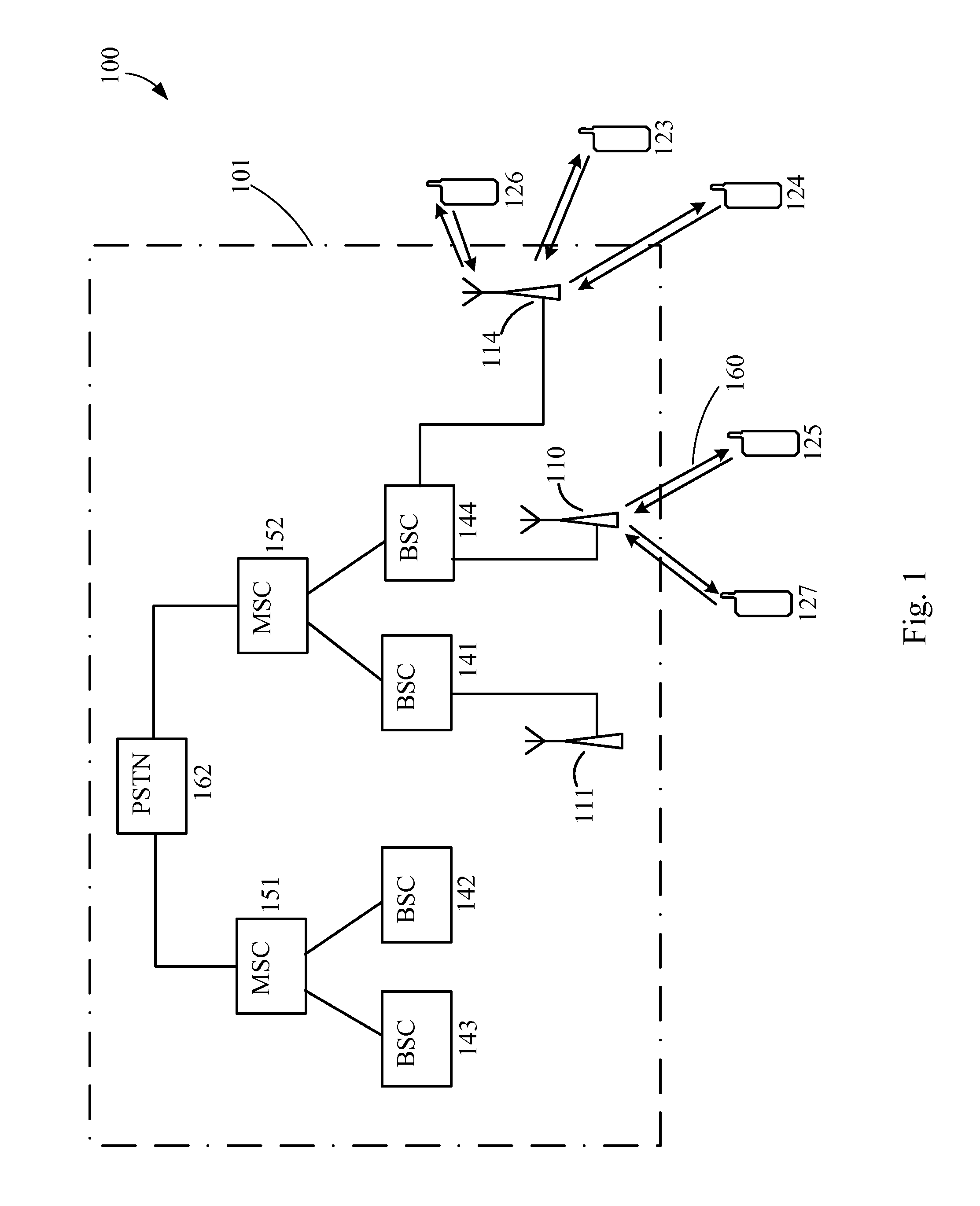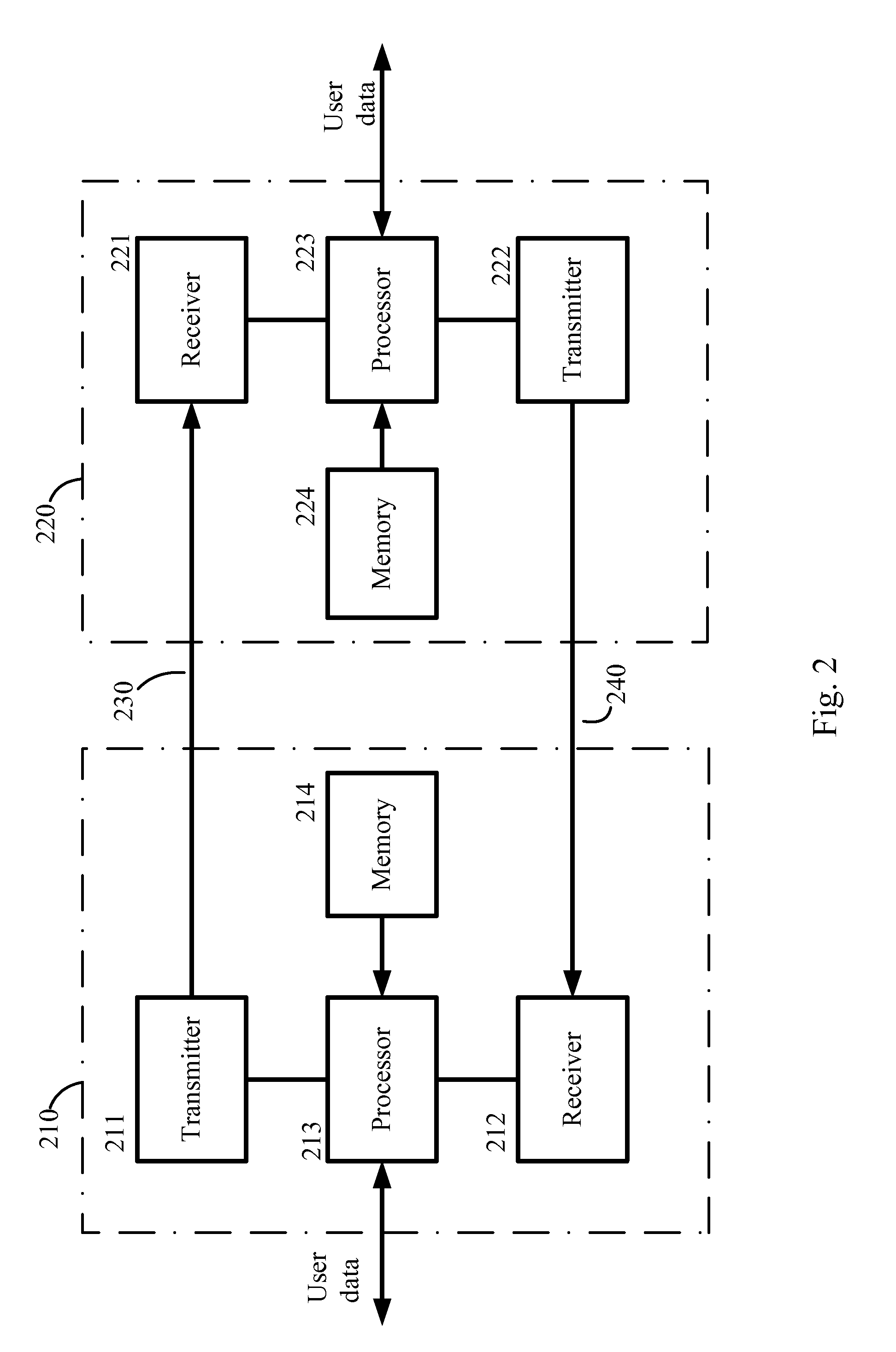Method and apparatus for assigning wireless network packet resources to wireless terminals
a wireless terminal and wireless network technology, applied in the field of communication systems, can solve the problems of inability to send an assignment message in response to every packet channel, and large system resources used for registration updates, so as to reduce the congestion on the channel, reduce the probability of subsequent successful data transfer, and reduce communication capacity
- Summary
- Abstract
- Description
- Claims
- Application Information
AI Technical Summary
Benefits of technology
Problems solved by technology
Method used
Image
Examples
Embodiment Construction
[0012]The invention is defined by the appended claims.
[0013]A transmitted single packet assignment message can be used by a network to enable packet assignment to be initiated for plural wireless terminals. This makes more efficient use of each such message when multiple packet channel requests are received by the network.
[0014]This may be advantageous when a channel via which packet assignment messages are transmitted has a lower communication capacity than a channel via which packet channel requests are received. The effective capacity of the channel via which the single packet assignment message is transmitted is at least doubled and may be tripled. The increased capacity acts to reduce congestion on the channel. This increases the probability of a wireless terminal receiving a positive response to a channel request which it sends. The probability of a subsequent successful data transfer is thereby increased.
[0015]The claimed features may result in improved efficiency of the assi...
PUM
 Login to View More
Login to View More Abstract
Description
Claims
Application Information
 Login to View More
Login to View More - R&D
- Intellectual Property
- Life Sciences
- Materials
- Tech Scout
- Unparalleled Data Quality
- Higher Quality Content
- 60% Fewer Hallucinations
Browse by: Latest US Patents, China's latest patents, Technical Efficacy Thesaurus, Application Domain, Technology Topic, Popular Technical Reports.
© 2025 PatSnap. All rights reserved.Legal|Privacy policy|Modern Slavery Act Transparency Statement|Sitemap|About US| Contact US: help@patsnap.com



